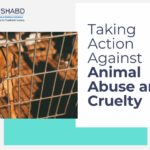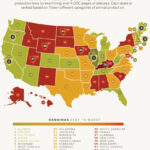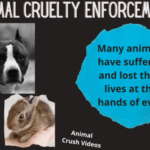What is the definition of cruelty to animals? It’s a question that invites introspection, nudging the conscience while simultaneously prompting a societal reckoning. Animal cruelty manifests in numerous ways, challenging our understanding of morality, legality, and societal norms. The interplay between these elements evokes a complex landscape where actions and beliefs converge, ultimately shaping how we perceive and treat our fellow creatures.
First, we must delineate what constitutes animal cruelty. Broadly speaking, it can be defined as the infliction of suffering, harm, or distress upon an animal, whether through deliberate actions or indifference. The spectrum of cruelty ranges from acts of sadism, such as physical abuse or torture, to more insidious forms, like neglect or abandonment. Each form poses a unique question: at what point does negligence ascend to cruelty? Furthermore, how do our perceptions of cruelty differ across cultures and experiences?
Legislation surrounding animal cruelty paints a stark picture, differing markedly by jurisdiction. In some regions, the law prohibits any form of unnecessary suffering, while other areas adopt a more lenient stance, only addressing overt acts of violence against animals. This disparity often illuminates the underlying societal values. For instance, in places where animals are seen primarily as property, laws may lack the robustness needed to offer genuine protection. Conversely, in countries that champion animal rights, legislation reflects a philosophical commitment to ethical treatment, thereby underscoring a social responsibility to safeguard living beings.
Morality and legality, however, are not always in harmony. While legislation is crafted to protect animals, not every act deemed legal aligns with societal moral standards. Take, for instance, industries reliant on animal exploitation, such as factory farming or entertainment. Many people wrestle with the ethical implications of consuming products generated through questionable practices. These activities, while potentially legal, evoke significant moral outrage and become focal points for activists seeking change. This duality raises challenging questions: Can we truly claim to be a civilized society if we turn a blind eye to the suffering of those unable to speak for themselves? What moral obligation do we carry in light of our choices?
Moreover, the psychological dimensions of animal cruelty deserve attention. Studies have indicated a disconcerting correlation between acts of animal cruelty and future violent behavior toward humans. Individuals who engage in cruelty toward animals often exhibit issues with empathy, raising grave concerns about societal implications. Such revelations urge society to reflect deeply on how we educate future generations about compassion and empathy. Is there an inherent understanding of morality, or is it molded by societal context and upbringing?
The role of society in combating animal cruelty forms another pivotal discussion point. Societal norms influence perceptions, shaping whether an act is viewed as reprehensible or acceptable. It is imperative to understand that change often starts at the grassroots level, necessitating a cultural shift toward enhancing empathy and understanding for all living beings. Advocacy and education can foster a sense of responsibility and obligation amongst community members, triggering a wider societal commitment to curbing cruelty.
Moreover, the framework established by organizations dedicated to animal protection plays a critical role in promoting change. Various NGOs and advocacy groups work tirelessly to expose deplorable conditions and raise awareness about cruelty. They highlight cases of abuse, pushing for legal reforms while simultaneously educating the public about the ethical treatment of animals. Their efforts serve to galvanize a collective consciousness, prompting individuals to confront uncomfortable truths about their dietary choices, entertainment habits, and treatment of animals within their communities.
As we delve deeper into the ramifications of cruelty toward animals, it complicates our worldview. The ethical considerations transcending laws beckon us to evaluate our collective standards. Are we, as a society, ready to reexamine our relationships with animals? The potential challenge lies in cultivating a culture that prioritizes empathy, compassion, and respect for all beings. It is a considerable shift, but perhaps the most crucial one for the future.
In conclusion, the definition of cruelty to animals straddles the domains of law, morality, and societal norms. While regulations exist to protect animals, the moral implications often extend far beyond what is codified in law. It is imperative that society reevaluates its relationship with animals, fostering a culture of compassion and respect. There lies an opportunity for transformative change, challenging us all to engage with the nuanced intersections of cruelty, empathy, and duty. Through reflection and proactive action, we can construct a more humane society, one where animals are granted the dignity and respect they unequivocally deserve. In this endeavor, our moral compass must guide us, ensuring we stand as advocates for those who cannot advocate for themselves.







